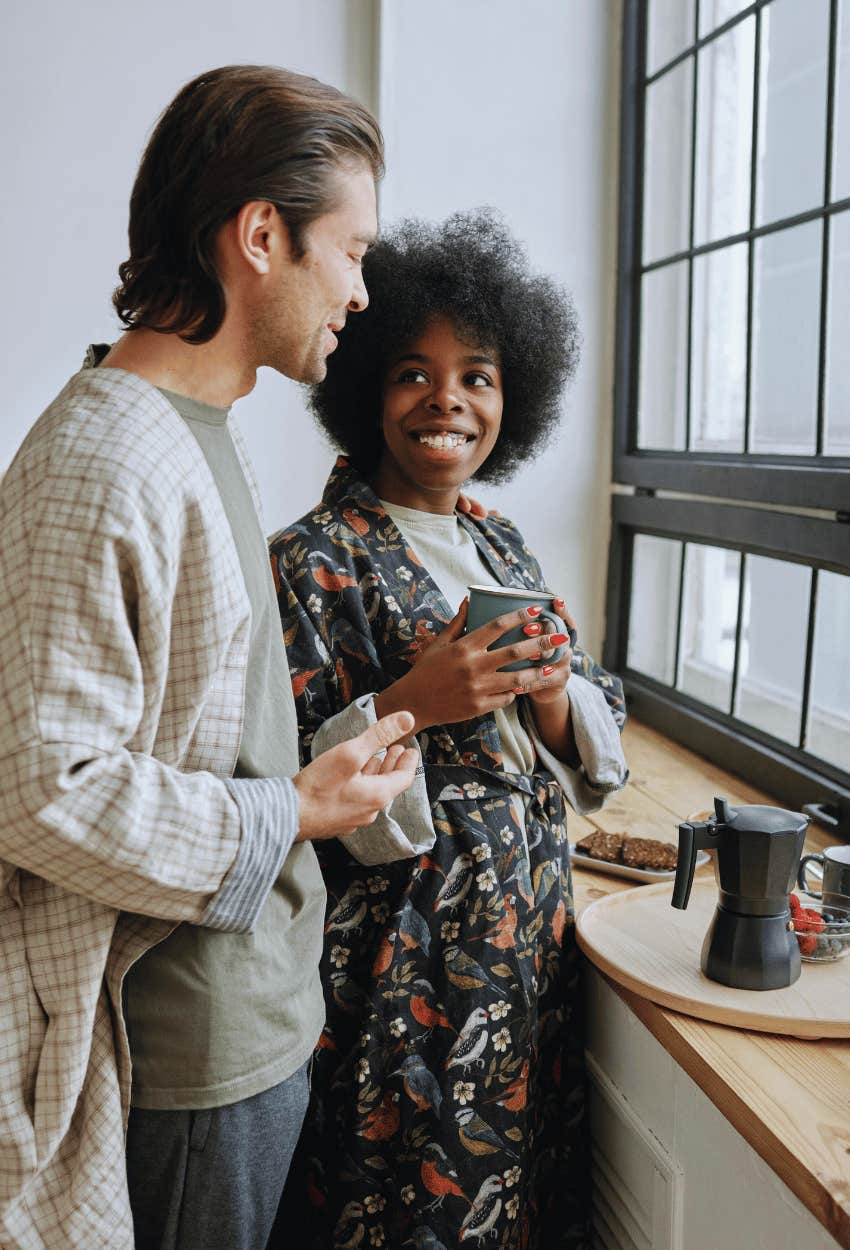5 Love Languages People With ADHD Wish Neurotypicals Understood
Have a loved one with ADHD? Here's how to understand them better.
 WESTOCK PRODUCTIONS | Shutterstock
WESTOCK PRODUCTIONS | Shutterstock In a society that prioritizes productivity, living with ADHD can be challenging. Many may not fully understand the struggles that come with it. Missing deadlines, appointments, and failing to keep up with everyday tasks aren't signs of laziness; they're a result of being easily distracted and having difficulty focusing — something that’s medical, not a choice. Beyond professional responsibilities, ADHD can also impact relationships, making it harder to connect with partners, friends, and family. One area where this challenge is especially prominent is in understanding and expressing love languages.
The mission of the TikTok account MyADHDventure is to help people better understand and destigmatize ADHD. In a recent post, the platform highlighted the five ADHD love languages that neurotypicals need to be aware of.
The 5 love languages people with ADHD wish neurotypicals were aware of:
1. Info-dumping
 Jack Sparrow | Canva Pro
Jack Sparrow | Canva Pro
The first love language addressed is info-dumping. According to the TikTok post, “When we love someone, we want to share everything we’re passionate about, all at once! Listening to us info dump without judgment shows you care about what matters to us.”
Info-dumping can occur when a person with ADHD shares a lot of information without considering the listener’s interest. Neurotypicals who are unaware can view this as self-centered or annoying, but it's the exact opposite. For someone with ADHD, it's a way to share something they feel passionate about with someone they care for.
According to ADHD expert Caroline Maguire, M.Ed., while info-dumping is about enthusiasm, it can sometimes cross into oversharing. This happens when someone doesn't pick up on social cues, leading them to discuss topics that may be too personal or private for a given situation. Oversharing can be especially problematic if shared with the wrong person. That's why it's important for neurotypicals to understand the difference.
2. Deep pressure
 pixelshot | Canva Pro
pixelshot | Canva Pro
The next love language is deep pressure. The TikTok post explained, "Sometimes, a deep hug or pressure is all we need to calm our overstimulated minds. It’s a physical way to say, 'I’m here for you.'"
Deep pressure is a form of therapy that helps regulate emotions and sensory responses, potentially improving focus, reducing anxiety, and enhancing overall well-being. If you’ve ever wondered how much a hug can really do, research shows it’s more than just comfort.
According to Healthline, hugging can reduce fear, stress, and pain and may even support immune and cardiovascular health. In fact, a study of over 400 adults found that hugging could lower the chances of getting sick. Seems like the deep pressure love language could be beneficial to everyone.
3. Penguin pebbling
 Comstock Images | Canva Pro
Comstock Images | Canva Pro
Another ADHD love language is penguin pebbling. MyADHDventure said, “We express love through small, thoughtful gestures, like giving you a cool rock or button because it reminded us of you. It’s our way saying, 'You matter.'"
Think the term sounds funny? Well, it's inspired by the mating rituals of penguins, where males present pebbles to potential mates as a gesture of affection and commitment.
Humans are similar in this way. Sharing small gifts — whether it’s a flower from your garden or a shell from the beach — doesn't have to be expensive, but it shows thoughtfulness and the growth of a relationship.
Giving gifts has psychological benefits, just like receiving them. Emiliana Simon-Thomas, Ph.D., science director at the Greater Good Science Center, explained to Psychology Today that gift-giving triggers the release of oxytocin, the "cuddle hormone," which fosters trust, safety, and connection. Unlike the brief dopamine rush from rewards like money or awards, oxytocin provides longer-lasting joy.
4. Body doubling
 Nataliya Vaitkevich | Canva Pro
Nataliya Vaitkevich | Canva Pro
MyADHDventure wrote, “Having someone nearby while we work helps us stay focused and motivated. Your presence, even if silent, makes us feel supported and less alone.”
People can also body double remotely, using video calls. For example, someone might write an essay while on a video call with a friend. Offering emotional support during a nerve-racking phone call is another form of body doubling. However, it’s important to note that relying too much on someone else for motivation can lead to codependence.
5. Sharing spoons
 MART PRODUCTION | Canva Pro
MART PRODUCTION | Canva Pro
The last love language is sharing spoons. According to the post, “ADHD can drain our energy fast. Sharing spoons means understanding when we’re low and stepping in to help or just being there with us.”
This is particularly important because forming and maintaining friendships is challenging for people with ADHD. According to therapist Keath Low from Verywell Mind, some difficulties include getting bored with friends or exhibiting fickle behavior, which can send the wrong message.
If you want friends to understand your communication style, it’s helpful to talk about your condition, if you feel comfortable, so they can better understand the reasons behind your behavior. This can make them more willing to “share spoons” with you. Similarly, if you have a friend with ADHD, one way to “share spoons” is by learning more about ADHD and understanding how to best support them.
So, if you have a loved one with ADHD, you can now understand them a little better. With this understanding, you can communicate more effectively and show them you care. Your ADHD friends and family will surely appreciate your effort.
Mina Rose Morales is a writer and photojournalist with a degree in journalism. She covers a wide range of topics, including psychology, self-help, relationships, and the human experience.

